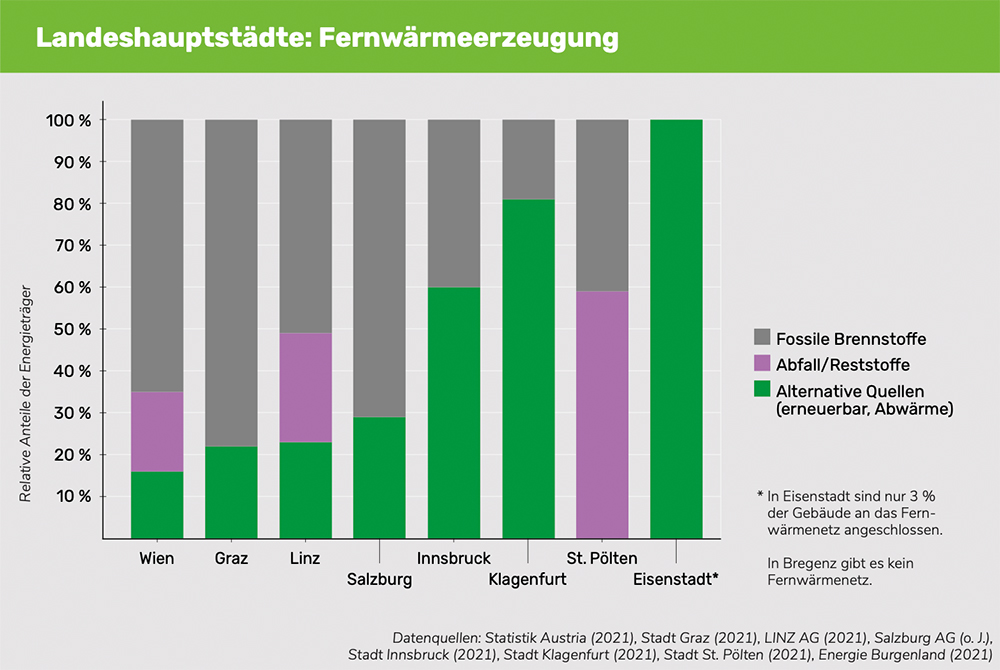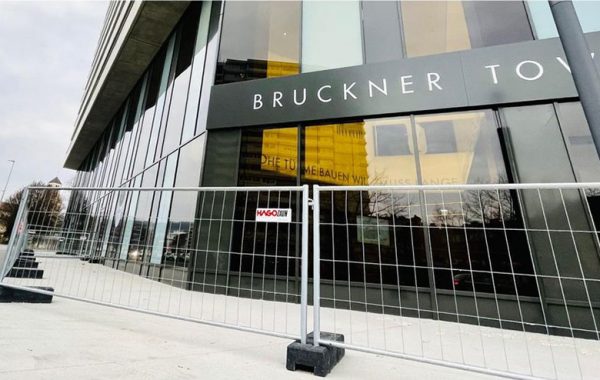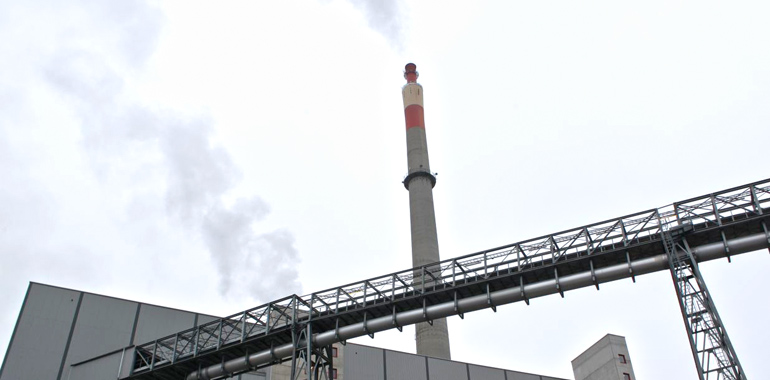6
Released March 26, 2022
0
–
–
More than 80,000 apartments in Linz (or 72 percent) are already connected to the Linz district heating network – but is the intensive expansion by Linz AG really the so-vaunted model for the future? The reality is probably different. 51 percent of the district heating generated comes from fossil fuels (mainly natural gas). Many experts doubt even because of the high line losse meanwhile whether district heating is sustainable at all. Of course, it’s big business for Linz AG – and the affected apartment tenants are driven into supply and price dependency. There are far better alternatives out there.
—
Up to 30 percent line losses
Poorly insulated district heating networks can lose more than 30 percent of the energy that is transported via the network. Even networks to which only a few consumers are connected achieve losses of this magnitude.
As the current development clearly shows, centrally controlled and produced district heating is also very prone to crises (quite apart from the terrible climate balance caused by burning fossil fuels). Linz AG Fernwärme is also heavily dependent on natural gas:
- 51% of the LINZ AG district heating generated comes from fossil fuels – and here mainly from natural gas.
- 26% comes from burning garbage and sewage sludge (up to 250,000 tons/year possible).
- 11% comes from waste heat.
- 12% is obtained by burning biomass (wood/pellets)..

“One solution would be to switch away from gas and district heating and exclusively to electricity as an energy source. Then photovoltaic modules could produce electricity on the roofs, the heat sources are heat exchangers (air or earth) and any additional energy required is supplied by electricity,” says Andreas Kleboth. The urban developer worked on a research project at the Vienna University of Technology. It was found that a switch from gas and long-distance heating to only electricity as an energy source (which ideally is also produced directly on the roof of the house) would be ideal.
Also piquant: Linz AG describes the heating of pellets as ‘natural heat’ – the district heating obtained in this way is described as ‘CO2-neutral’. You can call it that with a lot of good will, but in reality the district heating balance sheet will continue to deteriorate and even less environmentally friendly on balance sheet.
750Kg bound CO2 in one cubic meter of spruce wood
Why does burning wood do nothing for the climate? One cubic meter of spruce wood contains 750kg of CO2 that has been bound for decades and is released 1:1 when it is burned. Even if trees are planted again afterwards, they will not have an impact on the climate for decades at the earliest. “Climate-neutral” sounds good, but it means that no additional CO2 is bound – it’s exactly the opposite – and in incredible quantities. With the same argument, one could also describe the burning of natural gas, coal or oil as “climate-neutral” because these substances also come from nature and reproduce themselves – albeit over a much longer period of time…
Negligence in the use of industrial waste heat?
In the Global 2000 climate report, that’s not the only reason Linz got off badly. It says: “It is striking that in Linz the proportion of waste heat in district heating generation is only half as high as in Graz, although Linz, as an important industrial city, has high potential for using waste heat.” Here there were obviously omissions, the industry in solutions to include. The study explicitly mentions the increased use of biogenic residues, commercial waste heat, large heat pumps and solar or geothermal energy as a solution.
A wrong way?
In Linz, LINZ AG already supplies around 72 percent of the approximately 116,000 apartments (as of 2019) with district heating. A next goal has already been defined with the project “80 percent supply share for apartments by 2030”. “Linz district heating capital” – Linz AG proudly gave the city of Linz this title. Should one continue to gallop in this one direction with blinders on and that is not the completely wrong way (because there are much better and more sustainable alternatives)?
Post Views:
6
More of climate

359
–
Good things need because’: Are traffic calming for the city center coming now?
Released March 10, 2022
0
–
After a series of tragic traffic accidents in the city center, the municipal council decided last summer to draw up a concept for traffic-calming …
–
–
–
–
–

352
–
Beware of ice: Linz’s Bruckner Tower as an “avalanche warning area”
Released March 6, 2022
0
–
A specially erected fence now protects the highest residential tower in the city, the Brucknertower (99m) – or rather the pedestrians. …
–
–
–
–
–

295
–
New record: 5.5 million trucks on the A1 near Linz
Published on February 27, 2022
0
–
Around 5.5 million trucks – or around 20,000 per day – drove on the A1 near Traun last year – …
–
–
–
–
–
–
–


